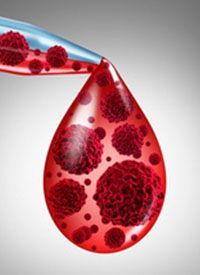Article
Frontline Pivekimab Sunirine Demonstrates Significant Activity in Blastic Plasmacytoid Dendritic Cell Neoplasm
Author(s):
First-line treatment with pivekimab sunirine generated responses with favorable tolerability in patients with blastic plasmacytoid dendritic cell neoplasm, according to data from the phase 2 CADENZA trial.

First-line treatment with pivekimab sunirine (IMGN632) generated responses with favorable tolerability in patients with blastic plasmacytoid dendritic cell neoplasm (BPDCN), according to data from the phase 2 CADENZA trial (NCT03386513).1
Among 4 patients with de novo BPDCN treated with pivekimab sunirine, 2 achieved a complete response (CR) or a clinical CR. Four of 6 patients with BPDCN who had a prior or concomitant hematologic malignancy (PCHM) experienced a CR, clinical CR, or a CR with partial hematological recovery. In addition, 3 patients, including 2 with de novo disease and 1 with PCHM, who enrolled prior to the opening of the untreated cohort, also achieved a CR or clinical CR with pivekimab sunirine.
“We believe these initial frontline data from the CADENZA study further support the potential of pivekimab [sunirine] as an important treatment option for patients with BPDCN,” Anna Berkenblit, MD, senior vice president and chief medical officer of ImmunoGen, stated in a press release. “Based on the initial frontline data observed to date, we will continue to explore the benefit of pivekimab in [patients with] de novo and PCHM [disease]. We look forward to sharing additional details of pivekimab [sunirine] in frontline BPDCN at an upcoming medical meeting.”
Pivekimab sunirine is a CD123-targeting antibody-drug conjugate (ADC) that is in clinical development for hematological malignancies, including BPDCN and acute myeloid leukemia. In October 2020, the FDA granted a breakthrough therapy designation to pivekimab sunirine for the treatment of relapsed/refractory BPDCN.
Cohort 6 of the CADENZA trial is enrolling untreated patients with BPDCN, including those with de novo disease and those with PCHM. Although these patients are not permitted to have received prior systemic therapy, they may have received local therapy, such as radiotherapy, surgical excision, or photodynamic therapy. Patients with prior local therapy must have experienced recurrence or progression in the field of local therapy or disease outside the field of local therapy.
Key exclusion criteria for cohort 6 include central nervous system metastases and any local therapy with 14 days of the start of study treatment.
The primary end point of the study is CR and clinical CR. A key secondary end point is duration of CR and clinical CR. Other secondary end points include duration of response, overall response rate, overall survival, and safety.
The trial will continue to enroll patients with BPDCN with PCHM. Based on guidance provided by the FDA in a recent Type B meeting, the company expects to enroll up to 20 patients with de novo BPDCN for inclusion in the efficacy analysis; to date, 6 patients with de novo BPDCN have been enrolled to the trial.
"With limited treatment options for this rare and aggressive cancer, I am encouraged by the data generated thus far for pivekimab [sunirine] in frontline BPDCN,” Kendra Sweet, MD, an associate member in the Department of Malignant Hematology at Moffitt Cancer Center, stated in the press release. “BPDCN patients with PCHM are increasingly recognized as having significant unmet need as there are no therapies specific for this population. BPDCN patients with PCHM are most likely to die of the aggressive BPDCN component, which requires urgent treatment, while the second malignancy is typically chronic and may not even require treatment.
Sweet added that it has been found that those with PCHM who have cleared their marrow of BPDCN with the ADC may not fully recover their counts, likely because of the underlying concurrent hematologic malignancy. According to Sweet, despite partial count recovery, complete clearance of the BPDCN can offer a bridge to transplant for eligible patients, which is the only curative option for the disease.
Due to the rarity of BPDCN, topline data on the primary and key secondary end points are expected in 2024.
References
- ImmunoGen provides update on pivotal CADENZA study of pivekimab sunirine in frontline blastic plasmacytoid dendritic cell neoplasm. News release. ImmunoGen. August 31, 2022. Accessed August 31, 2022. https://bit.ly/3TucEam
- Study of IMGN632 in patients with untreated BPDCN and relapsed/refractory BPDCN. ClinicalTrials.gov. Updated April 22, 2022. Accessed August 31, 2022. https://clinicaltrials.gov/ct2/show/NCT03386513









